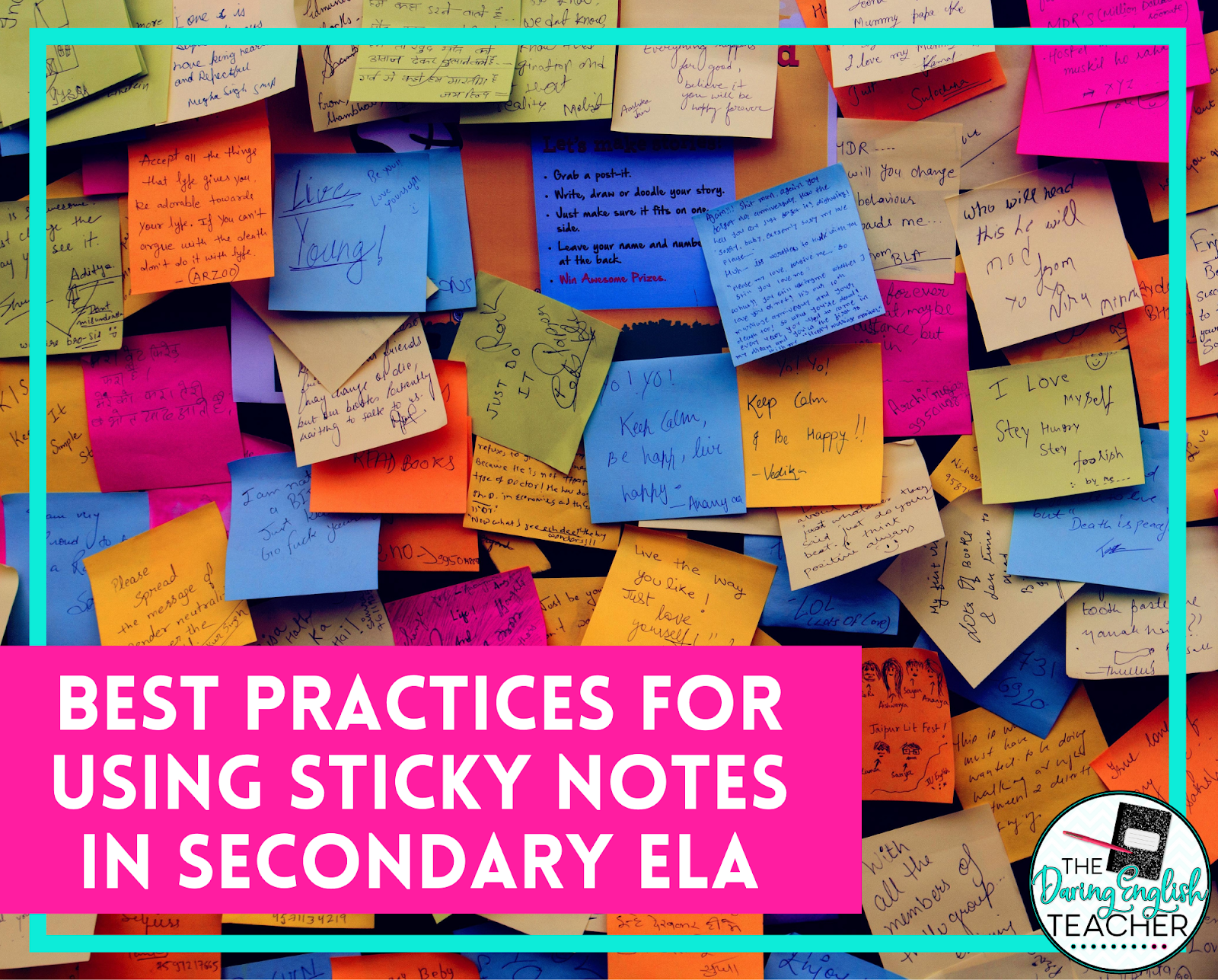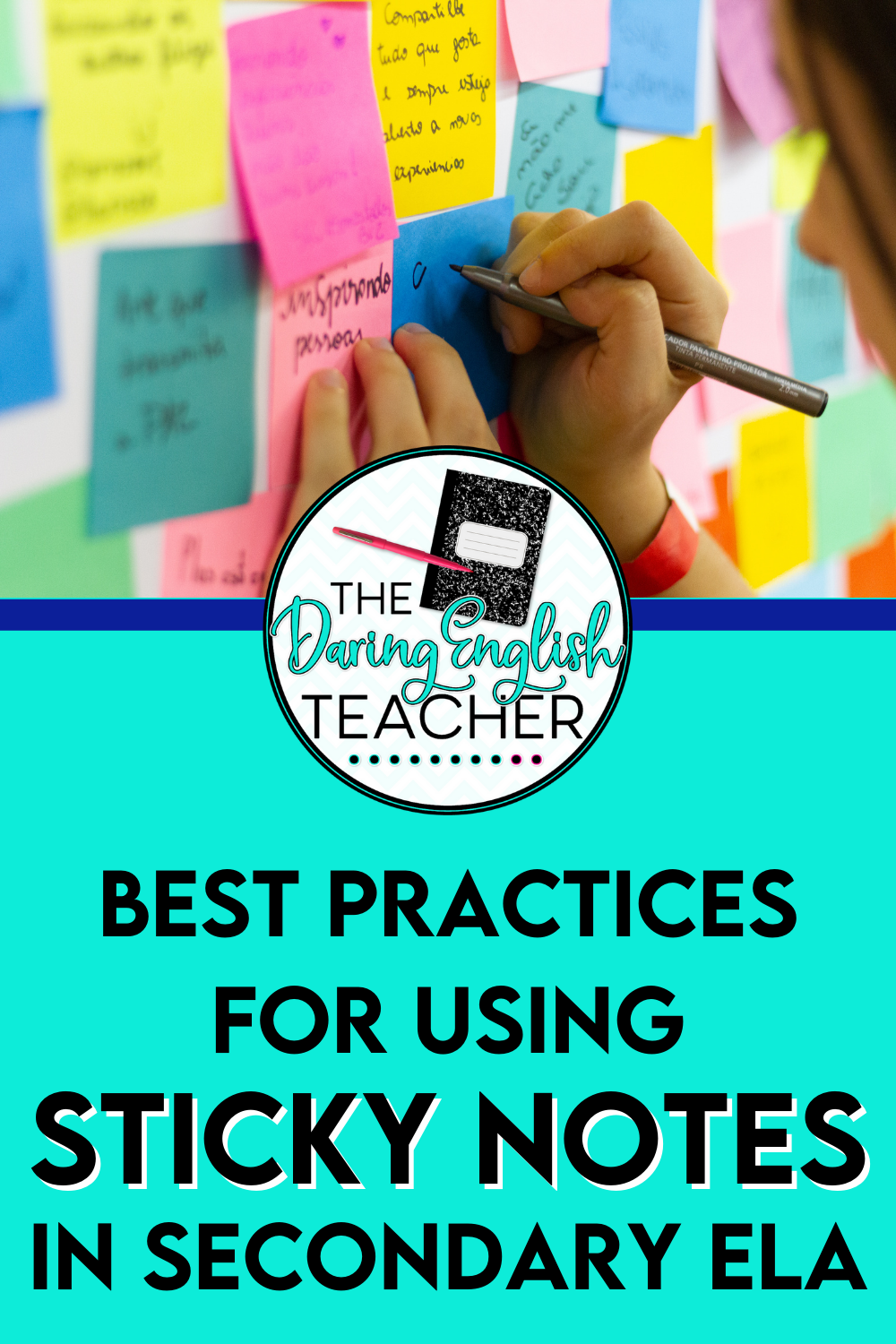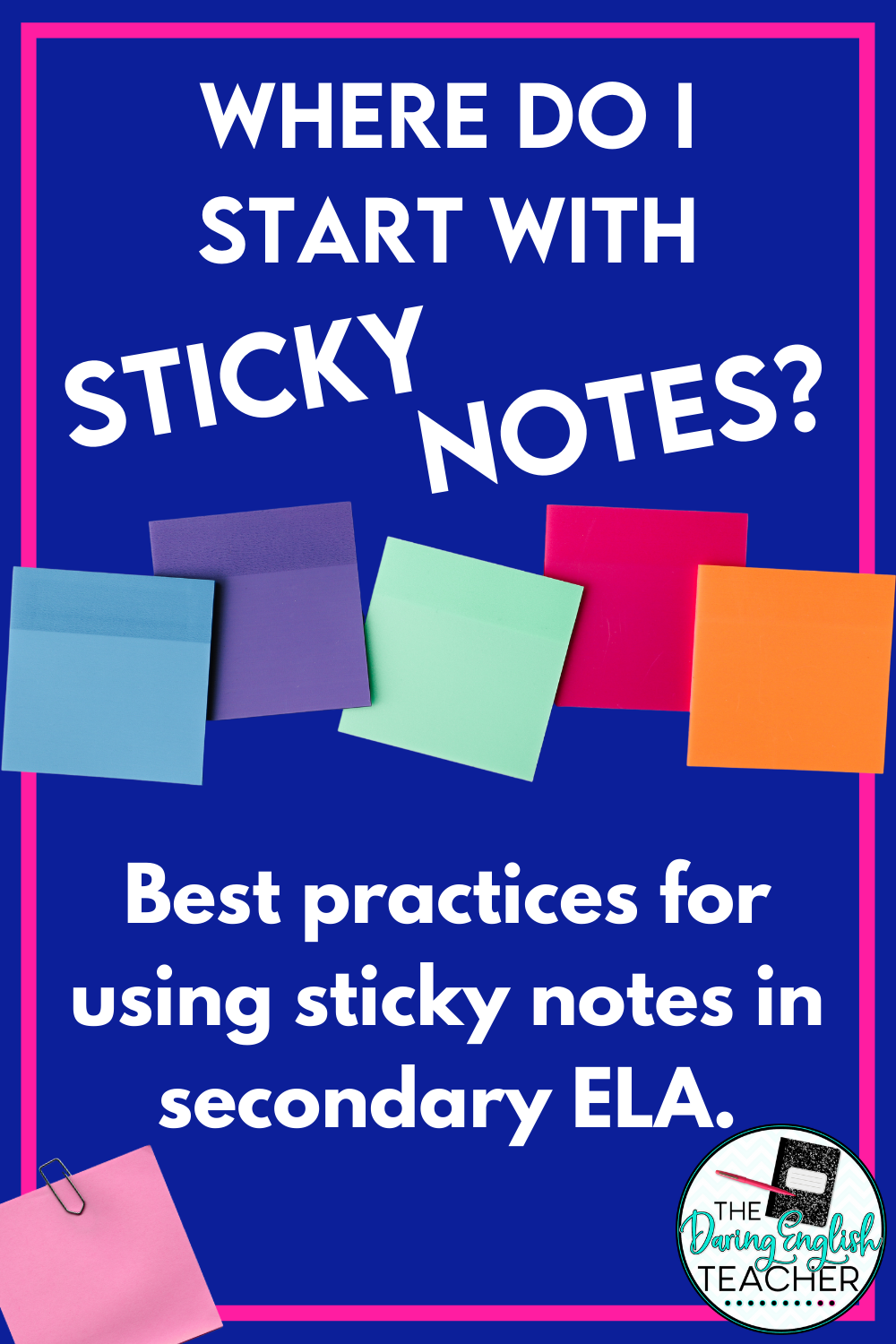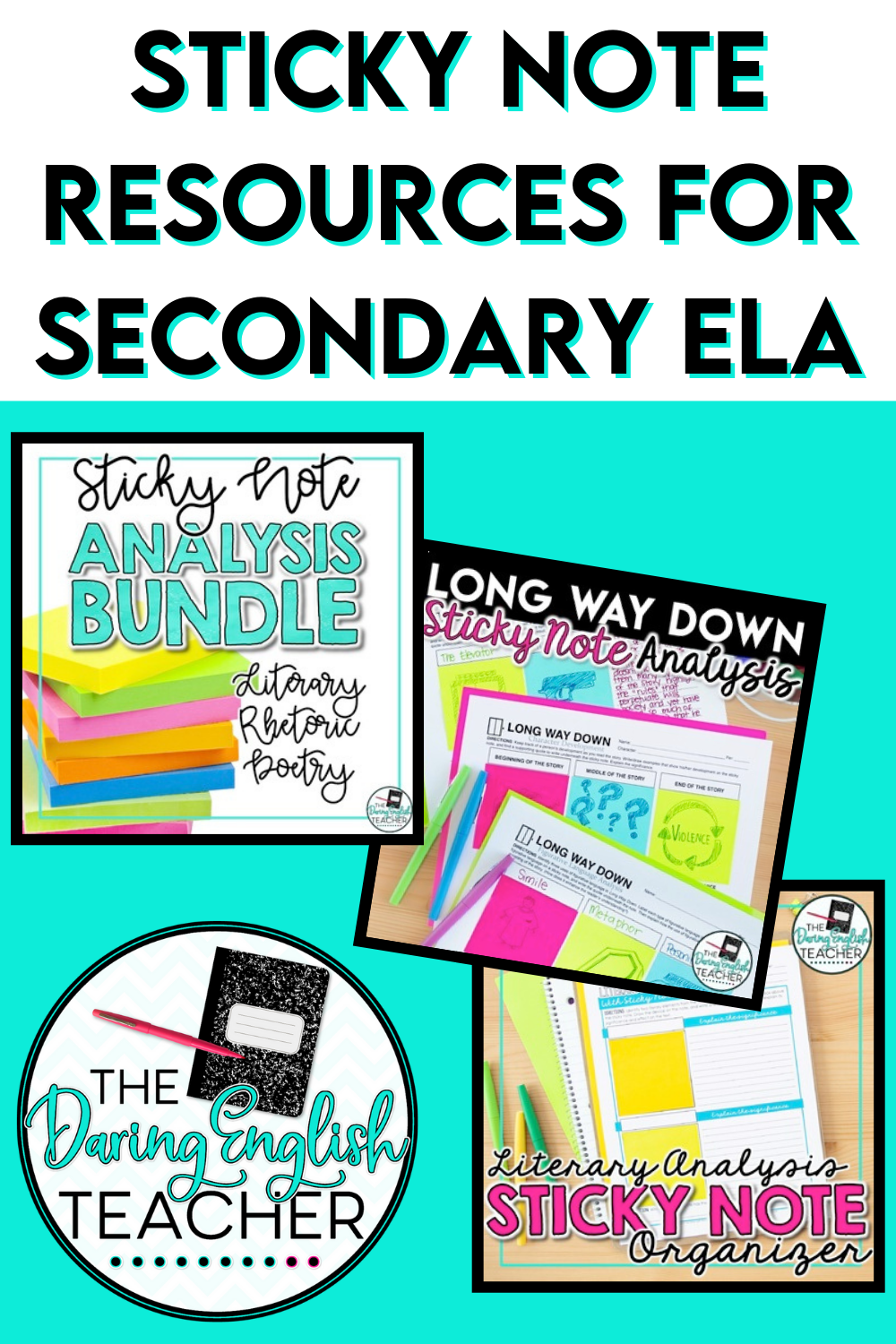You probably won’t get very far in teaching without hearing about a plethora of sticky note activities. It might even seem overwhelming because you can use sticky notes for just about anything. What are the best practices for using sticky notes, especially when you’re teaching older students? Read on to see my suggestions.
1. Use them conscientiously
There are two points to consider – how to get ahold of them, and what to do with them when you’re done. Buy in bulk for the best bang for your buck. But if you are tight in the supply budget and it’s part of your school culture to provide supply lists to students, consider having students contribute to a class stock of sticky notes or have them bring their own supply.
The other thing to consider is how to dispose of sticky notes. There’s a myth that sticky notes can’t be recycled. While some types of sticky notes are harder to recycle (like those with fluorescent dyes), and not all recycling centers take “mixed paper”, I recommend considering alternatives to just tossing them in the trash. Check with your state and local recyclers if they accept mixed paper and consider starting a recycling program at your school if there isn’t one already. You can also keep sticky notes on a display wall for students to refer to later or keep an empty photo album as a collection of class notes and assignments to review as needed.
2. Use them consistently
I’m all for offering a variety of notetaking skills and options for organizing thoughts. But I also think students
thrive when they have a consistent style of notetaking. Consider practicing various forms of notetaking and letting students decide what works best for them – including sticky notes. If you want to use sticky notes for all close reading passages, then use them for all close reading passages. It will become second nature for students and they will know what to expect from the assignment when you create a habit.
3. Use them meaningfully
Ultimately, using sticky notes should focus on student retention. You could probably find a “sticky notes” version for just about any type of assignment – but that doesn’t mean you should. Your tried and true lessons don’t need a makeover. Remember these are just a tool. Assignments with in-depth organization needs, introducing any type of close reading work, preparing for debates, and working with new text are great ways to see increased productivity in student work. Think about how you will be productive and efficient. Don’t forget to include yourself! Think of your sticky notes as a vessel to guide students to whatever assessment you have ready. I.e. don’t fret trying to grade individual sticky notes for an assignment. Tie it together with what you really want students to get out of the work and focus on the meaning.
So where do I start with sticky notes in the classroom?
You can find so many ideas on Pinterest and Teachers Pay Teachers (see my sticky notes resources here). But take a look at your own lessons and see where they might be a good fit.
- Print exit tickets on sticky notes to take a quick assessment of how the class is doing with assignments.
- Have students jot notes and questions and place them in their textbooks as they read, or turn in to you after a lecture so you can see what needs to be reviewed.
- Encourage more productive reading by having students use sticky notes to mark questions, or use for close reading.
- Build up to class discussions or debates by using sticky notes. Students can jot notes individually, and build their discussion points with groups until they have a comprehensive list made from everyone’s thoughts.
- When dealing with tough subjects, ask students to use sticky notes to put their personal thoughts down in the moment, and they can revisit them later to journal or just have a space to get their thoughts out.
- If you have lengthy assignments like those related to research, students can compile their notes with sticky notes and then organize them into like-minded categories or topics without sifting through pages and pages of notes in different places.
If you’re looking for a good list of resources to start using sticky notes in tried and true methods, visit my store and find some great options such as





